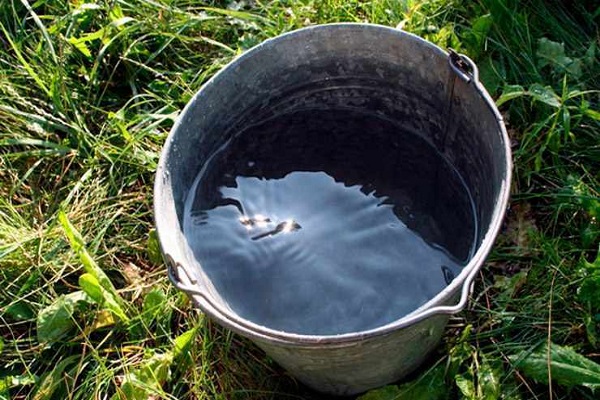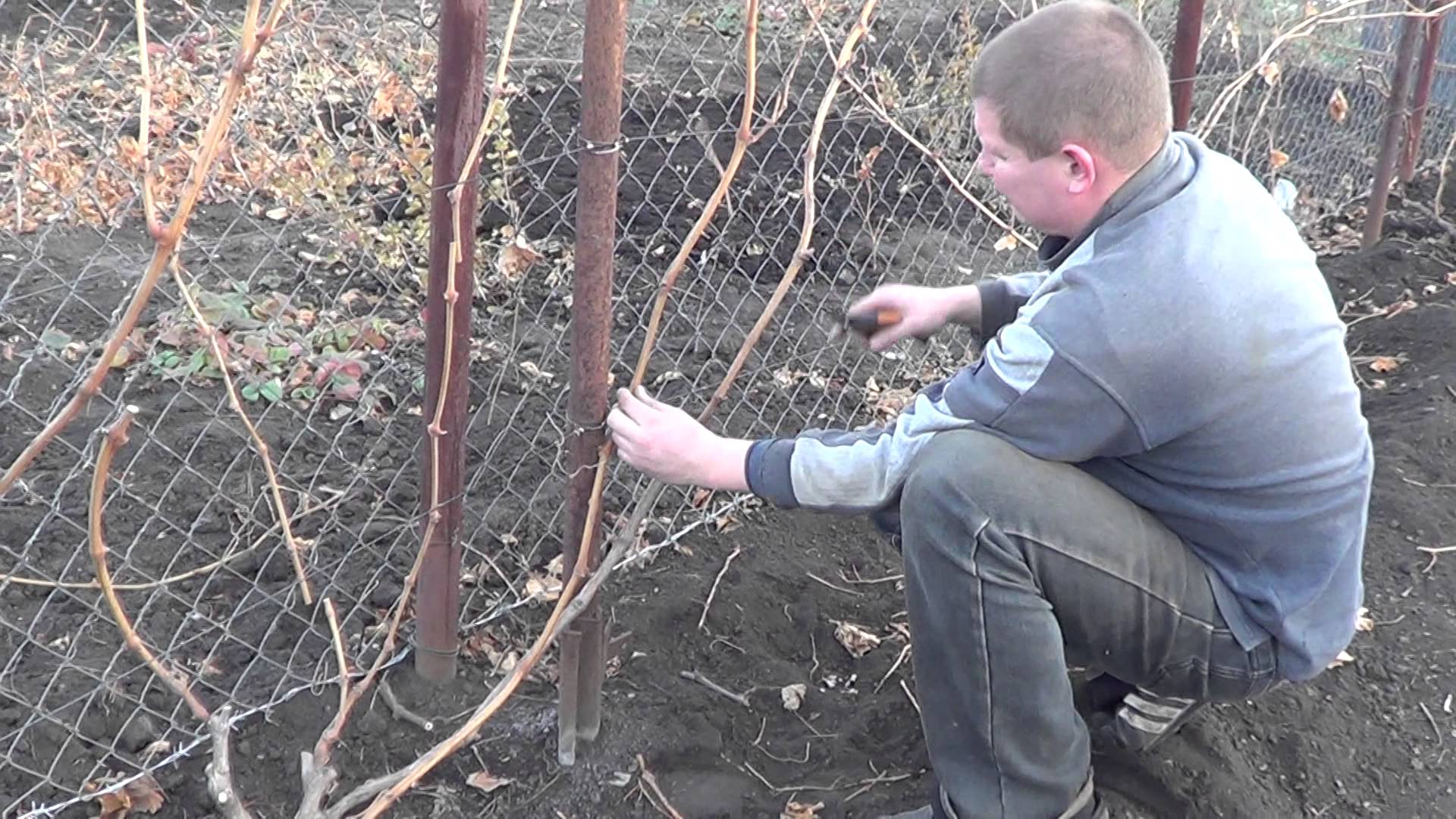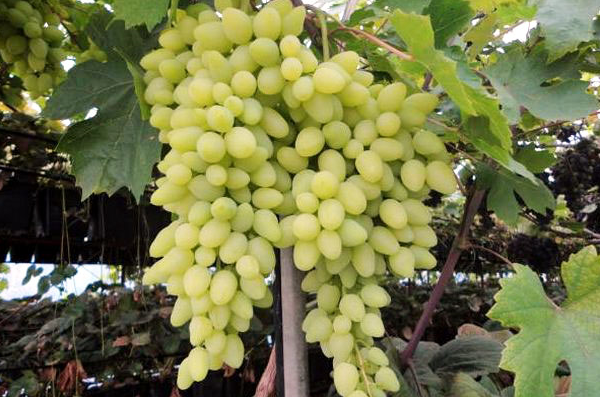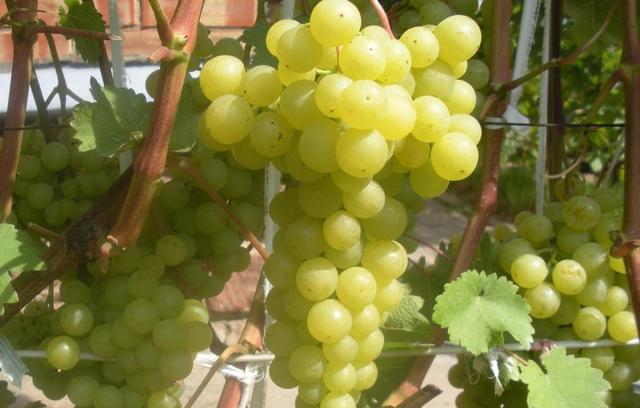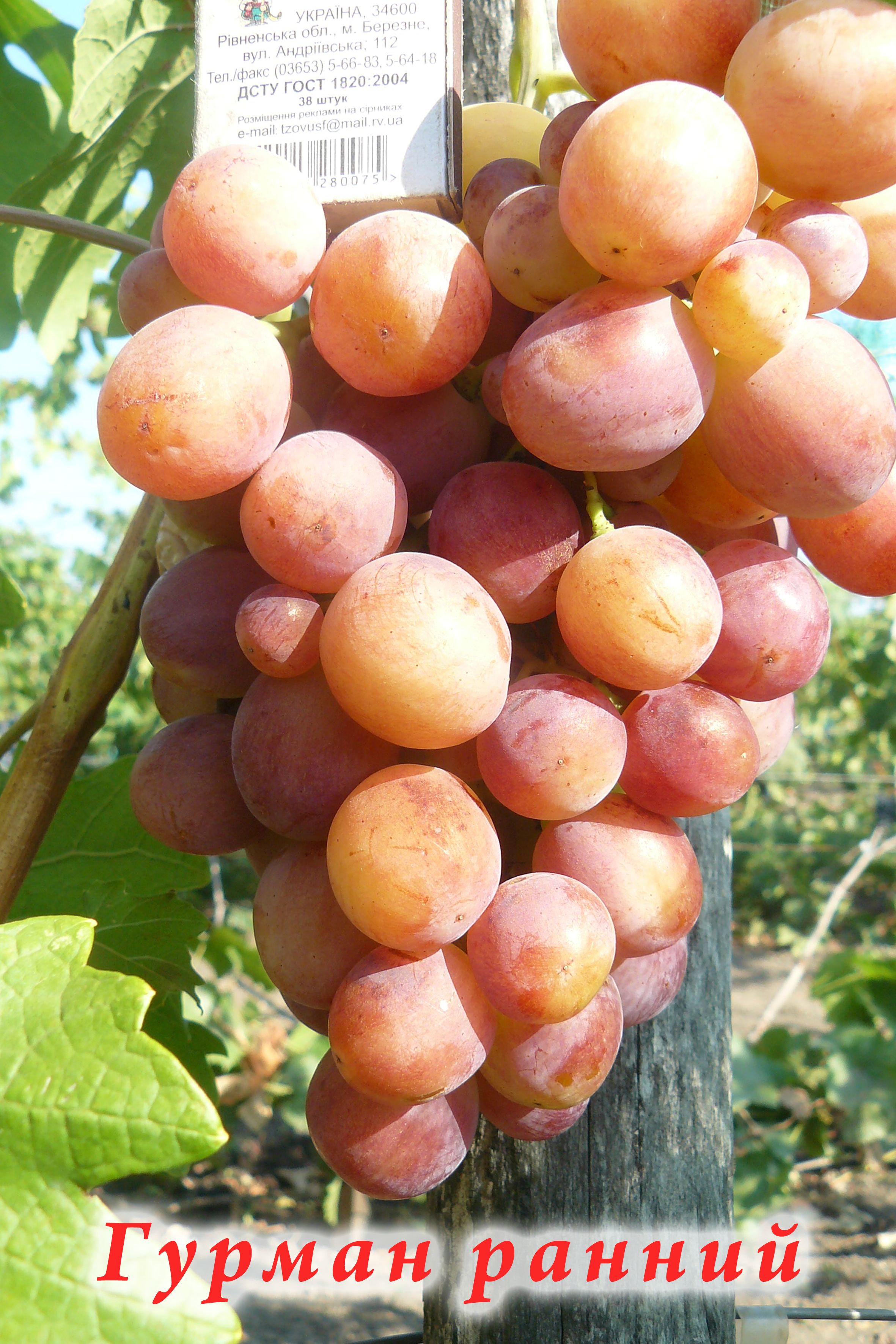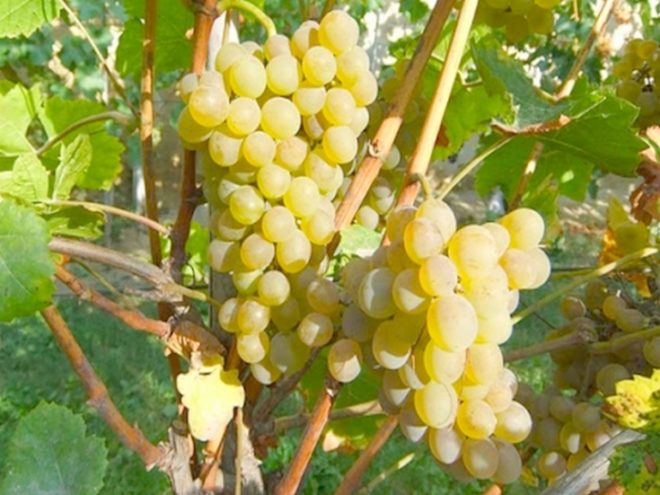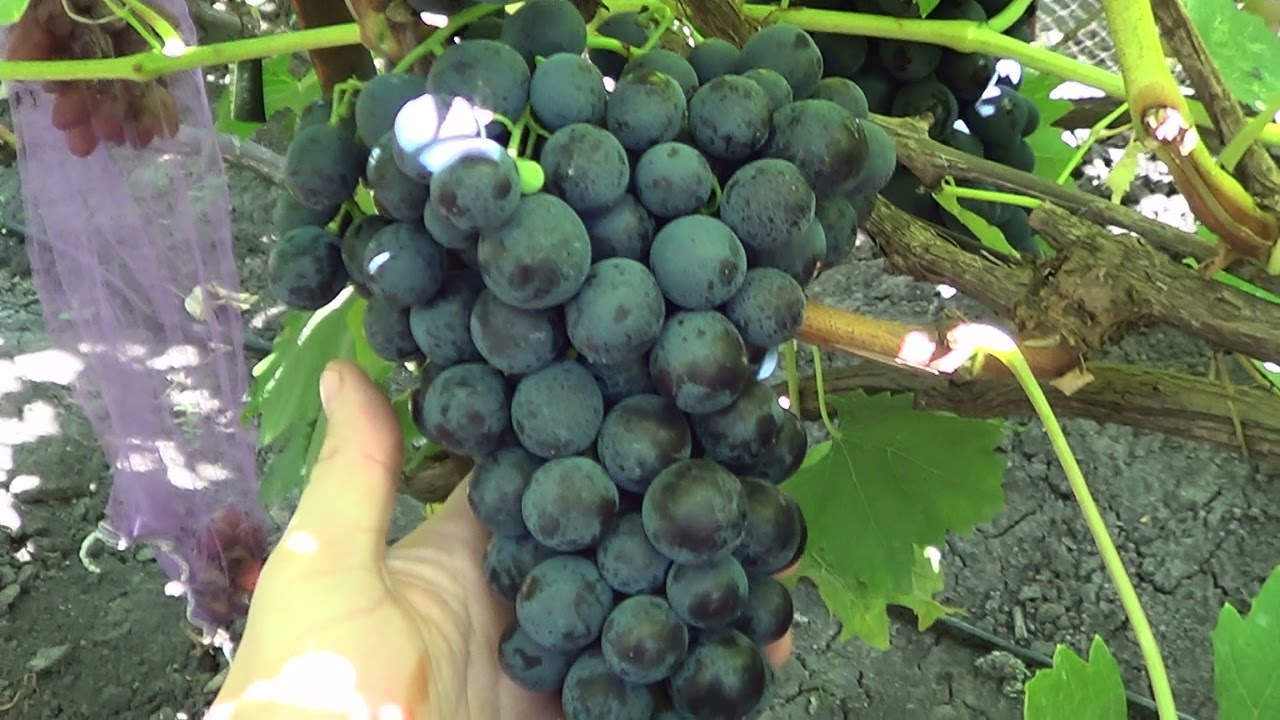Viticulture is developed in regions not only with a warm climate, but also with a temperate one. For 50 years, the Rizamat grape has been a leader in popularity among the variety of table varieties of culture.
Description and characteristicsgrapesRizamat
This variety was bred by Uzbek breeders as a result of crossing such varieties as Kata-Kurgan and Parkent.
The vineyard bushes are tall and highly developed. The trunks are tapered. A large number of berries develop on them, located loosely to each other. The weight of one berry reaches 14-16 grams. The berries are characterized by an intense pink color. The skin is not very thick, covered with a waxy bloom on top. In the middle of the berry there are no more than 4 small seeds, which are practically not felt when eaten. The inside of the berry is juicy and has a sweet taste. It contains approximately 25 - 30% sugar.
On the shoots, five-lobed, weakly dissected leaves are densely located, which are of medium size and an intense green color.
The variety has a weak resistance to disease development. Therefore, the grower must timely process the bushes with fungicides. The variety is able to withstand frosts up to 18 degrees. In this regard, plants need shelter for the winter.
It belongs to the early varieties: the berries begin to ripen at the end of summer. The fruit must be processed immediately after harvest. They do not have the ability to be stored for a long time.
In addition, the bushes are not resistant to powdery mildew.
The grapes of this variety can be used fresh, make delicious grape wine from it, make jelly, jam and compotes. During heat treatment, grapes do not lose their properties and taste.
Reproduction and care
Grapes of this variety, like others, do not tolerate drafts. Therefore, you should pay special attention to the choice of a place for planting cuttings.
For planting, the composition of the soil is of no small importance. Only in this case can the active development of the plant be achieved and a good harvest can be obtained. It should be loose and fertile.
The grapes should be propagated by cuttings, which are best planted in spring or fall. For planting, you need to dig a hole, the depth and width of which is at least 80 cm. At the bottom of the hole, you need to sprinkle a layer of rubble, 5 cm thick. Pour 10 cm of soil onto it. To prepare it, you need to add humus. In this state, the pit is left until the cutting itself is planted.
When choosing a seedling, special attention should be paid to the condition of its root system. The root should be white and free from any damage on its surface.
The seedling is placed in the pit so that its root collar is at the level of the upper edge of the pit. Gradually, the pit is carefully covered with earth. After that, at a distance of 20 - 25 cm from the pit, a support is installed, and the seedling is watered with warm water in the amount of 2 - 3 buckets.
If the cutting is planted in autumn, the soil near it is mulched with sand, and if in spring, the seedling is covered with a cardboard box with a cut hole for the seedling. The top of the cutting is placed in the hole.
Seedling care is about timely watering. The humidity level must be kept constant. When watering, water should not be poured under the bush itself, but only into a specially formed watering pit. After adding water, the hole must be buried and mulched. You can use sawdust or moss for this. The thickness of the mulching layer can vary from 2 to 3 cm.
Grapes need additional feeding with the use of potassium phosphate fertilizers, ash or organic matter. Top dressing can be carried out while digging the soil near the bush or when watering it.
In order to avoid infection with fungal diseases, grape bushes need timely processing. To do this, you can use Bordeaux liquid, Cuproxat or Strobi.
Processing must be carried out twice before the flowering of the bush, and then upon completion of the formation of the berries.
During the growing season, one cannot do without carrying out such manipulations as pinching, pruning or thinning shoots and leaves.
The Rizamat grape has the ability to actively form stepchildren. They need to be removed periodically. In this case, it is necessary to leave 1 - 2 leaves, which will prevent damage to the kidney itself.
Important! It is necessary to remove stepchildren when they still have a grass structure. Otherwise, you can harm the plant.
If you neglect the pinching, many underdeveloped buds will appear on the plant, which will significantly reduce the yield level.
Pruning the bush should be done when the plant reaches a height of 2, 5 - 3, 0 m. It should be borne in mind that at least 15 leaves must be left above the pruning site. This will provide the bush with additional nutrition.
Failure to follow pruning rules can lead to active growth of stepchildren, which will weaken the plant and reduce its yield.
In order to speed up the process of formation and ripening of grape fruits, experienced growers recommend removing the leaves that are located near the groins. Thanks to this technique, it is possible to ensure access of sunlight to the berries.
The Rizamat variety cannot be called frost-resistant. In order to avoid damage to the bush by low temperatures, the plant must be covered for the winter. If the grape bush is formed in the form of an arch, the plant must be carefully removed from the support, and then cut off its top. As a wrapping material, you can use burlap, the top of which is covered with plastic wrap. Holes are pre-made in it through which the ventilation process will be carried out. On top of the film, the grapes are also burlap. If you do not use burlap, but just a film, this can provoke the formation of a greenhouse effect, which will lead to the development of putrefactive processes.
Rizamat grape disease
The plant is susceptible to the development of fungal and viral diseases. The first type includes the following diseases:
- Mildew. Yellow spots and white bloom develop on the leaves of the grapes.
- Oidium. Plaque attacks leaves and berries. High temperature and lack of moisture are favorable conditions for the development of the disease.
- Anthracnose. The stem and leaves are covered with a brown bloom in a short time. Then the plant just dries up.
- Cercosporosis. Olive spots attack berries and leaves.
If we talk about viral ailments of grapes, the most common are:
- Marbling of leaves.
- The mosaic is veined.
- Leaf necrosis.
- Chlorosis.
The best way to fight grape diseases is to prevent them. Preventive measures consist in timely spraying with fungicides and proper care of the plants.
If, nevertheless, it was not possible to avoid infection, experienced growers recommend using such means for processing bushes:
- Anthracol;
- Acrobat;
- Bordeaux mixture;
- Cuprosat;
- Ridomil;
- Thanos;
- Horus, etc.
With proper care and adherence to the rules of reproduction, Rizamat grapes will thank you with a good harvest.

